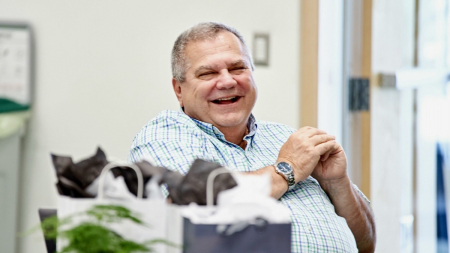YPO Protein Forum: Aimutis Weighs In

In December 2023, NCFIL Executive Director Bill Aimutis joined YPO Leader Miguel Calatayud in an online forum to have a conversation about food innovation and food technology.
YPO: What does “food innovation” mean to you?
AIMUTIS: Food innovation means formulating products that are healthy, nutritious, safe, and desired by consumers. We want to formulate products today for the future. We are seeing changes in the industry as we experience a segmentation of the consumer base, some are younger and more indulgent while others are healthier. Sustainability has been a conversational topic the last year.
YPO: What are the main challenges you see in the food innovation process in the US and worldwide?
AIMUTIS: The issues I frequently observe are a lack of knowledge, supply chain issues, and a lack of contract manufacturers. I also believe that providers in these businesses are overcharging for their services, which limits launch opportunities for promising products. Unfortunately, large production runs are necessary for most manufacturing plants to maximize operational efficiency and cover costs.
YPO: Most companies associate food innovation with “plant-based” or “alternative products.” What are your thoughts about health and global nutrition?
AIMUTIS: Plant-based or alternative products are not necessarily the answer to our global woes in regard to the environment, healthier eating, and reducing food costs. With that said, they are critical to people’s future on this planet for the following reasons: they are inexpensive, nutritious, can be grown most anywhere, and are environmentally friendly.
First generation products were formulated with many undesirable ingredients, which made ingredient labels look questionable. Formulators were focused on turning out products that resembled existing products with which consumers were familiar, but they did not necessarily meet the flavor, texture, and good nutritional value of the existing product. The consumer tried and did not repurchase many products.
The latest generations of products are greatly improved because these same companies received feedback through their foodservice distribution on where improvements needed to be made. We anticipate several new generation products to launch in 2024.
YPO: The U.S. is one of the most developed countries in the world, yet there are hundreds of thousands of people who die directly or indirectly of malnutrition each year. What are your thoughts about solutions in the short-, mid- and long-term?
AIMUTIS: For short-term solutions, let’s start with school educational programs. We no longer have traditional cooking and nutrition classes. Existing generations have grown up on fast food because it was cheap and convenient. We now see the costs of these eating habits in worker productivity and health insurance premiums.
As a society, we tend to focus on the wrong things; here’s a good example. COP 18 focused on eliminating animal-based products in the interest of climate change, yet I would argue more energy should be spent educating the population on proper eating. Proper eating can include moderate protein intake vs. overindulgence; flexitarian diet vs. carnivore or vegetarian/vegan; fresh fruit and vegetable consumption of 5 servings a day; 25 g daily fiber consumption; 3 servings of dairy per day, and more. For the longer term, we need to re-introduce equity into farming, so small farmers can earn a decent living and feed the population.
YPO: In Houston, the Houston Food Bank provided 150 million meals last year. Can you give us some data about North Carolina, and how the state can mitigate this challenge?
AIMUTIS: In North Carolina, 1 in 8 people, and 1 in 6 children, go to bed at night hungry. We rank 10th in food insecurity. Nearly 17% of NC households with children are food insecure. We are especially challenged in the far western and eastern regions of our state with food deserts as there are not enough retail outlets selling food. Unfortunately, these same areas also have inadequate internet 5G coverage; therefore, ordering from Amazon is a challenge. Furthermore, these areas also have challenges with poverty and lack of education. North Carolina encourages consumers to buy and eat locally, but this is an obvious challenge for those regions.
YPO: Is there technology that you think has the potential to end hunger in the United States?
AIMUTIS: Technology can only be taken so far to solve this problem. As mentioned, we need to start educating consumers in grade school to encourage better food procurement, preparation, and consumption in the future. At the farm, we should not fear using AI and ML logarithms, sensors, and computer simulation to minimize the effects of climate equilibration and overall production. We also need to widen the broadband net, focus on improved preservation techniques, and integrate any technology that uses upcycling and reduces food waste.
YPO: If you would have to use one technology today, which one would you choose and why?
AIMUTIS: I would use microwave processing and combinations thereof because of its lower energy use, success with nutrient retention, food safety, and prolonged product shelf life. This technology has been in use for decades but has not yet been recognized for its novelty and possible role in improving food preservation and combating food insecurity. The limited capacity (throughput) in using this microwave processing has limited it from reaching its full potential. There needs to be more research in industrial application of this technology.
I’d also choose biomanufacturing in a close second. The era of biomanufacturing is early in development, but offers great hope for the future.
- Categories: